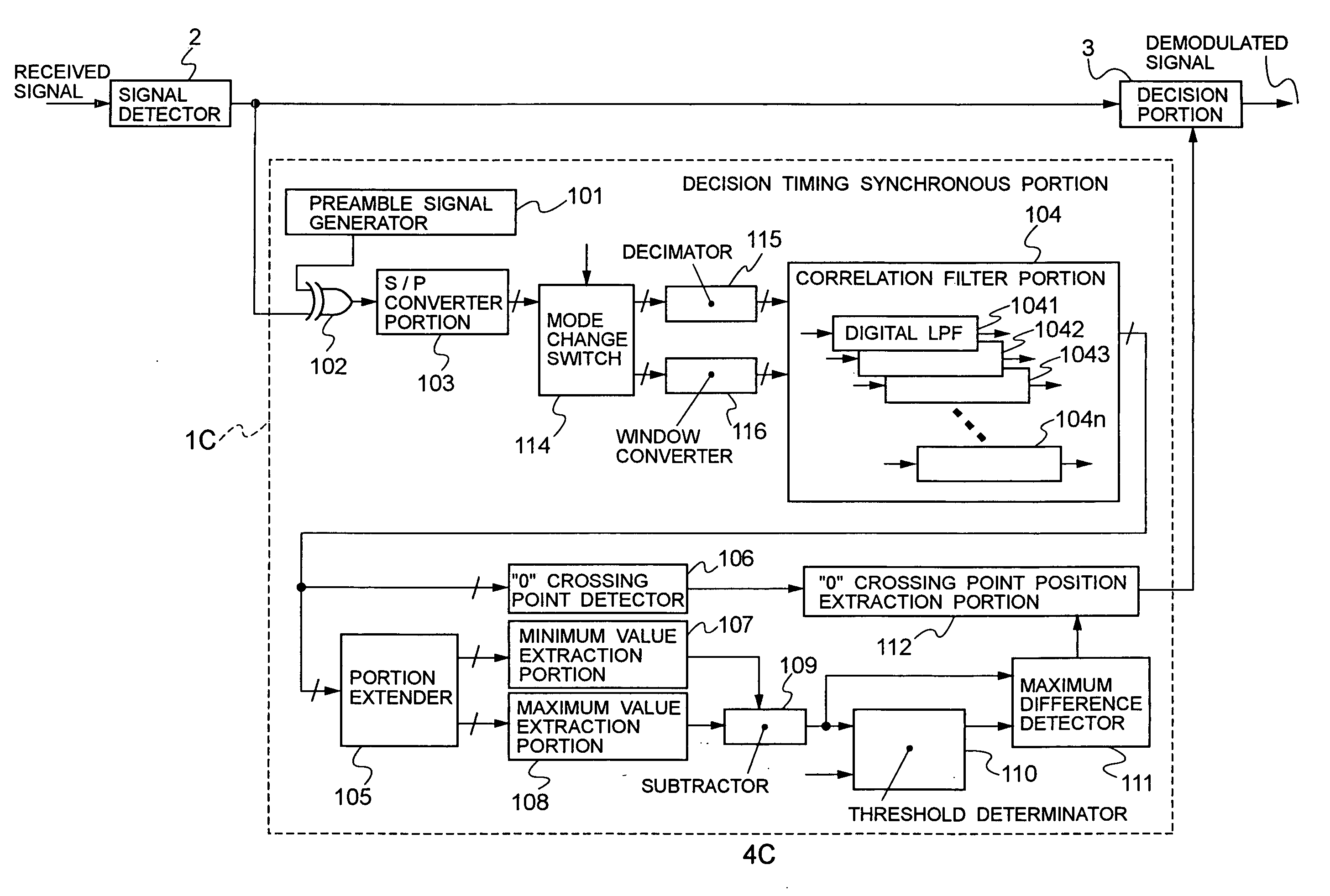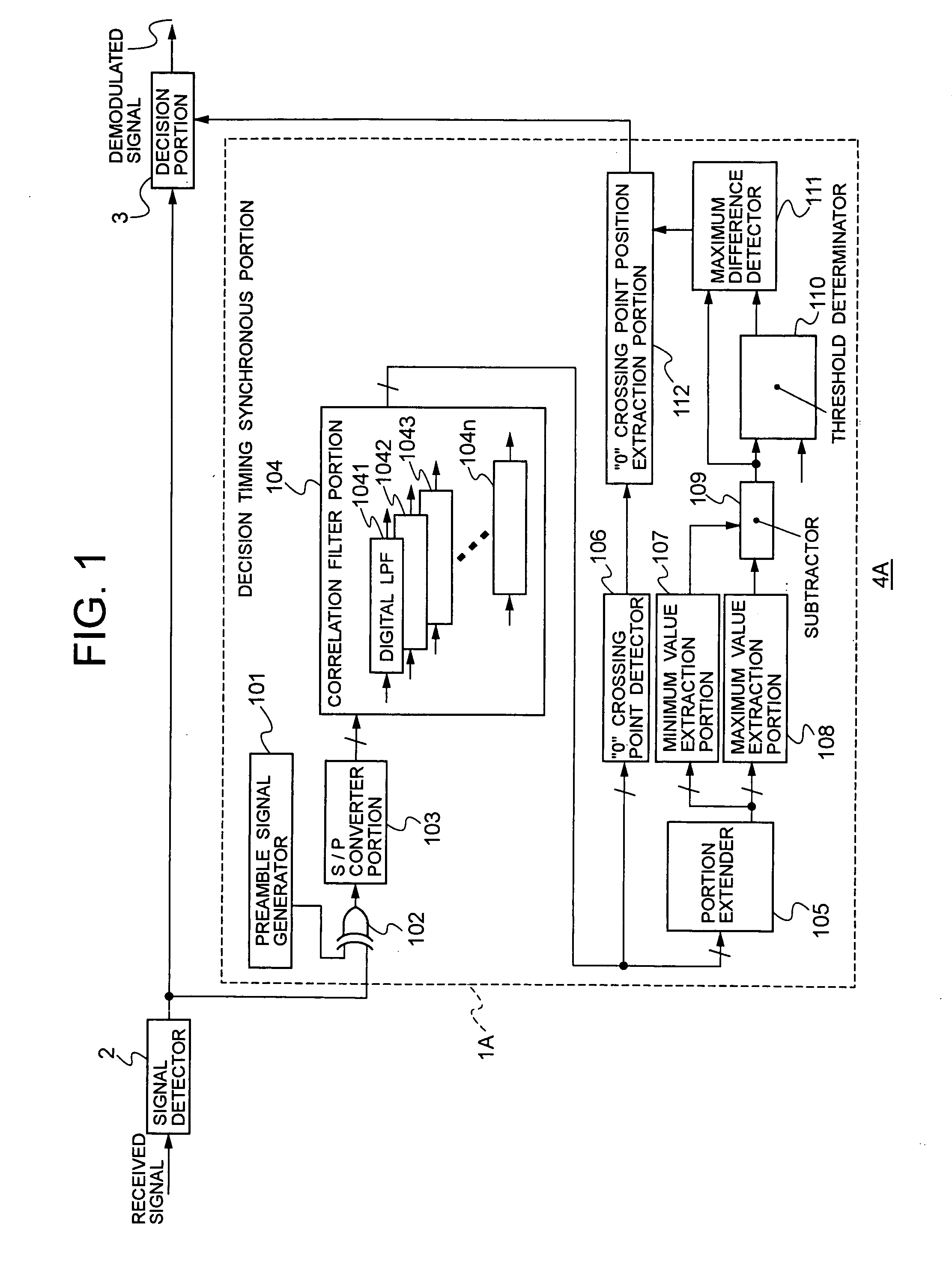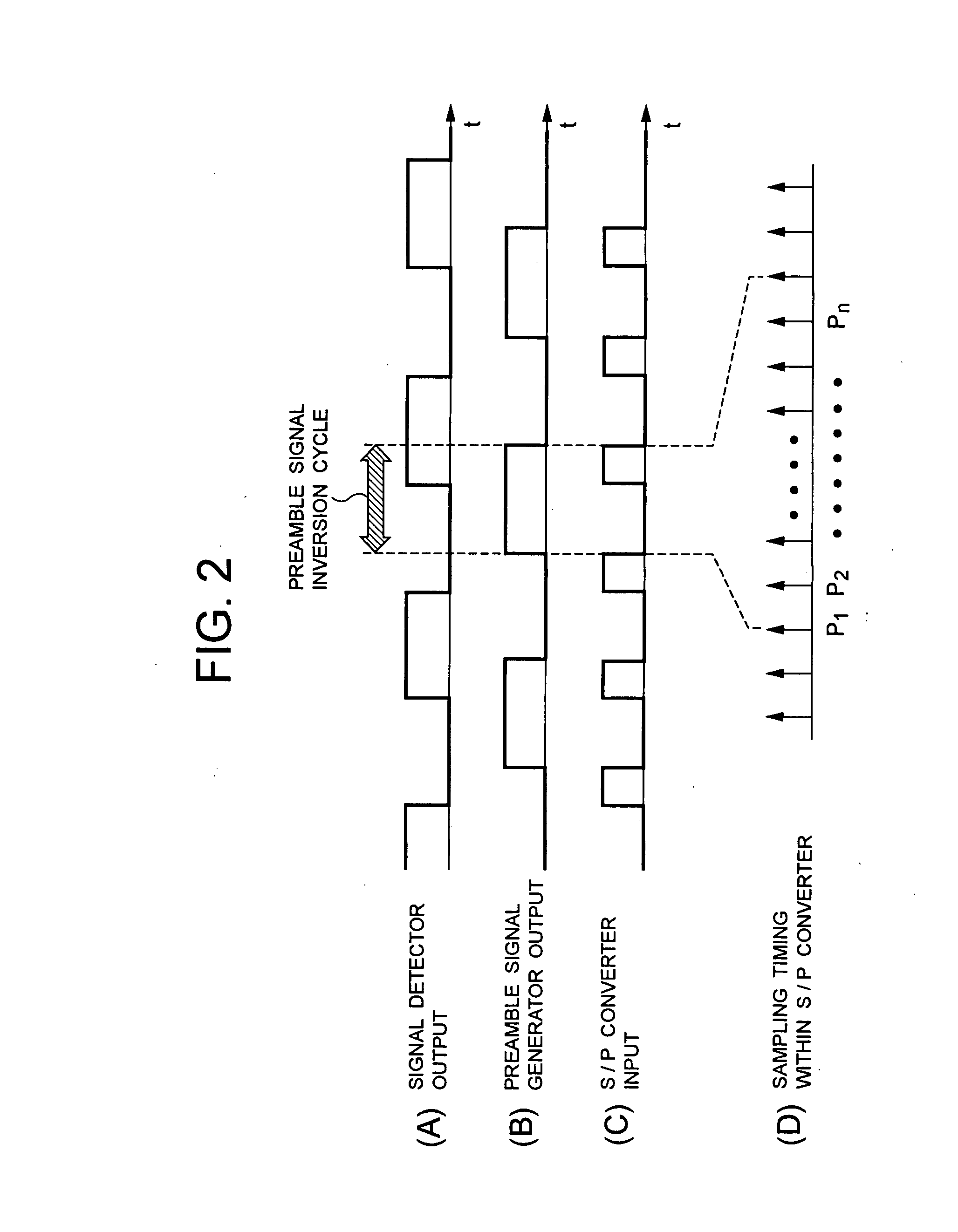Decision timing synchronous circuit and receiver circuit
a timing synchronization and receiver circuit technology, applied in the direction of synchronisation signal speed/phase control, multiplex communication, digital transmission, etc., can solve the problem of difficult to recognize the optimum decision timing simply with the correlation value, and reducing the circuit scale. , to achieve the effect of improving the resistance to offs
- Summary
- Abstract
- Description
- Claims
- Application Information
AI Technical Summary
Benefits of technology
Problems solved by technology
Method used
Image
Examples
first embodiment
(A) First Embodiment
[0030]Now, a detailed description will be made to a decision timing synchronous circuit and a receiver circuit according to a first embodiment of the present invention with reference to the drawings.
[0031]In accordance with the embodiment, the description will be made to a receiver circuit which generates a demodulated signal from a detected signal received using the decision timing provided by the decision timing synchronous circuit of the present invention.
[0032](A-1) Arrangement of the First Embodiment
[0033]FIG. 1 is a block diagram illustrating the main internal configuration of the receiver circuit according to the embodiment. In FIG. 1, a receiver circuit 4A of the embodiment is configured to include a signal detector 2, a decision timing synchronous portion 1A, and a decision portion 3.
[0034]The signal detector 2 detects a received signal to provide a signal, which is binarized based on the detection result, to the decision timing synchronous portion 1A an...
second embodiment
(B) Second Embodiment
[0101]Now, a description will be made to a decision timing synchronous circuit and a receiver circuit according to a second embodiment of the present invention with reference to the drawings.
[0102]FIG. 8 is a block diagram illustrating the main internal configuration of a receiver circuit 4B according to the second embodiment.
[0103]The arrangement of the second embodiment is different from the arrangement of the first embodiment in that a decision timing synchronous portion 1B of the second embodiment includes an interpolator 113 for interpolating the values between the sampling timings output from the correlation filter portion 104.
[0104]Since the other components correspond to those of the first embodiment, FIG. 8 shows the components with the symbols corresponding to those of FIG. 1. Furthermore, the detailed description below relates to the interpolator 113 which is characteristic to the second embodiment, and thus the other components, which have already be...
third embodiment
(C) Third Embodiment
[0116]Now, a description will be made to a decision timing synchronous circuit and a receiver circuit according to a third embodiment of the present invention with reference to the drawings.
[0117]FIG. 10 is a block diagram illustrating the main internal configuration of a receiver circuit 4C according to the third embodiment.
[0118]The third embodiment is different from the first embodiment in that a decision timing synchronous portion 1C of the third embodiment includes a mode change switch 114, a decimator 115, and a window converter 116 between the S / P converter portion 103 and the correlation filter portion 104.
[0119]Since the other components correspond to those of the first embodiment, FIG. 10 shows the components with the symbols corresponding to those of FIG. 1. Furthermore, the description below relates to the arrangement that is characteristic to the third embodiment, and thus the other components, which have already been described in relation to the fir...
PUM
 Login to View More
Login to View More Abstract
Description
Claims
Application Information
 Login to View More
Login to View More - R&D
- Intellectual Property
- Life Sciences
- Materials
- Tech Scout
- Unparalleled Data Quality
- Higher Quality Content
- 60% Fewer Hallucinations
Browse by: Latest US Patents, China's latest patents, Technical Efficacy Thesaurus, Application Domain, Technology Topic, Popular Technical Reports.
© 2025 PatSnap. All rights reserved.Legal|Privacy policy|Modern Slavery Act Transparency Statement|Sitemap|About US| Contact US: help@patsnap.com



